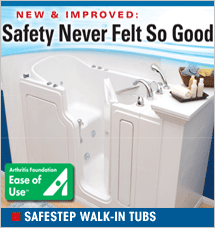
You go out to the garage and find you have a flat tire. Worse, you're driving and suddenly you have a flat or even a blow out. You open the trunk and look for the spare tire, but can't find one. No, it hasn't been stolen; the manufacturer never installed a spare tire.
Today many vehicles, especially smaller and sportier models, are no longer fitted with spare tires, not even those small, donut spare tires that will get you to a repair shop at reduced speed. In some cases you can still order a full size spare, but in most vehicles there is no place to store one.
Manufacturers haven't eliminated the spare to make more profit, though it does cut costs. The big reasons are new government fuel efficiency standards that require corporate average fuel economy of combined 29.7 mpg for the 2012 model year, increasing to 34.1 mpg by 2016.
One way to achieve better fuel economy is to reduce vehicle weight. A full-size spare tire, jack and lug wrench can weigh over 40 pounds. This may be a relatively small amount, but today every pound counts. Also with ever smaller cars, there is no space for a spare without reducing space for people and their stuff.
Many upscale cars and SUVs use runflat tires, that like donut tires, will let you drive to get repairs or a replacement tire. Runflats can run for some distance without air, typically about 50 miles. Since you can't often detect a flat with a runflat, there is usually an instrument panel warning that lets you know of a tire failure. Depending on the design, runflats can provide a harsher ride.
Many other vehicles now come with an emergency sealant and inflator kit rather than a spare. The inflator is typically a small, battery-operated air compressor. Unfortunately, this will be of little value if you have a blowout or the tire is damaged so it cannot hold air.
If you are unsure what type of "spare" you have, read your owner's manual. If you have a full size or donut spare, check it for proper inflation pressure when you check the other tires. Since sealants deteriorate with age, check the "use by date," if used. In any case, replace it every five years. Don't forget to replace if you use it to fix a flat.
Tires deteriorate with age and after about six years, they are really too old for safe driving. You can determine when a tire was produced by the federally mandated Tire Identification Number on the side of the tire. Actually, the spare can deteriorate faster: since it doesn't roll, oils do not migrate through the tire to keep it soft and pliable.
If you are unfamiliar with the spare used on your vehicle, read the manual and perhaps even make a dry run. It is better to practice on your driveway on a sunny day than to "learn" on the side of the road on a rainy night.
Since proper tire inflation pressures are so important for good fuel economy, future vehicles could run on self-inflating tires. Goodyear is working on its Air Maintenance Technology (AMT) that keeps tires inflated at the optimum pressure without the need for any external pumps or electronics. All components of the AMT system, including a miniaturized pump, would be contained within the tire itself. Power for the pump would be supplied by the tire as it rolls down the road.





























































